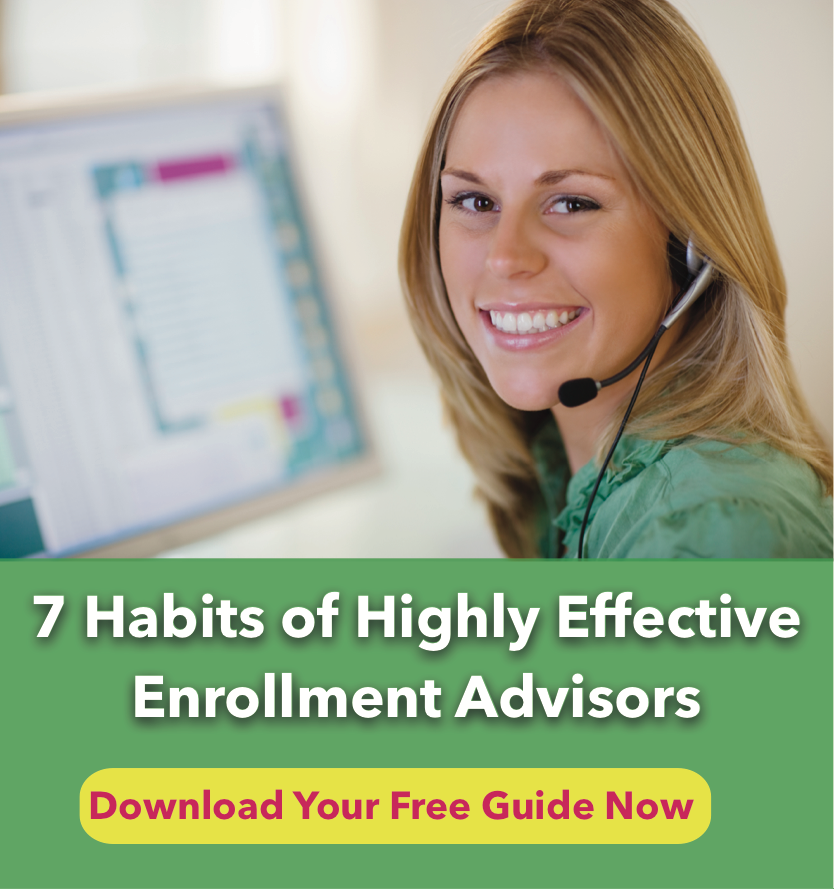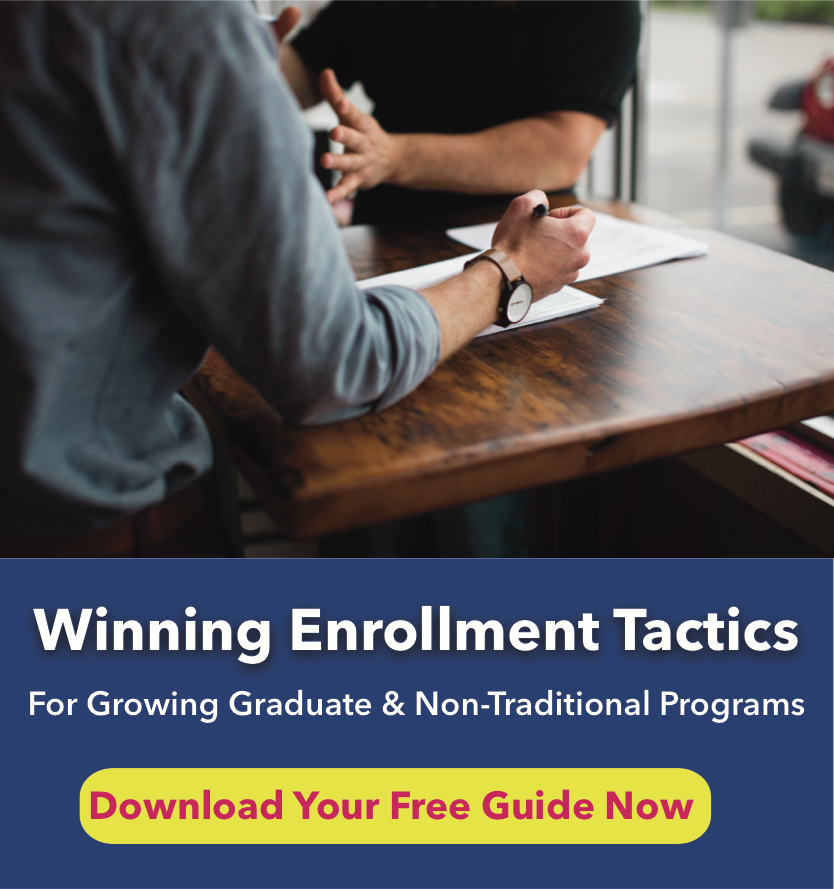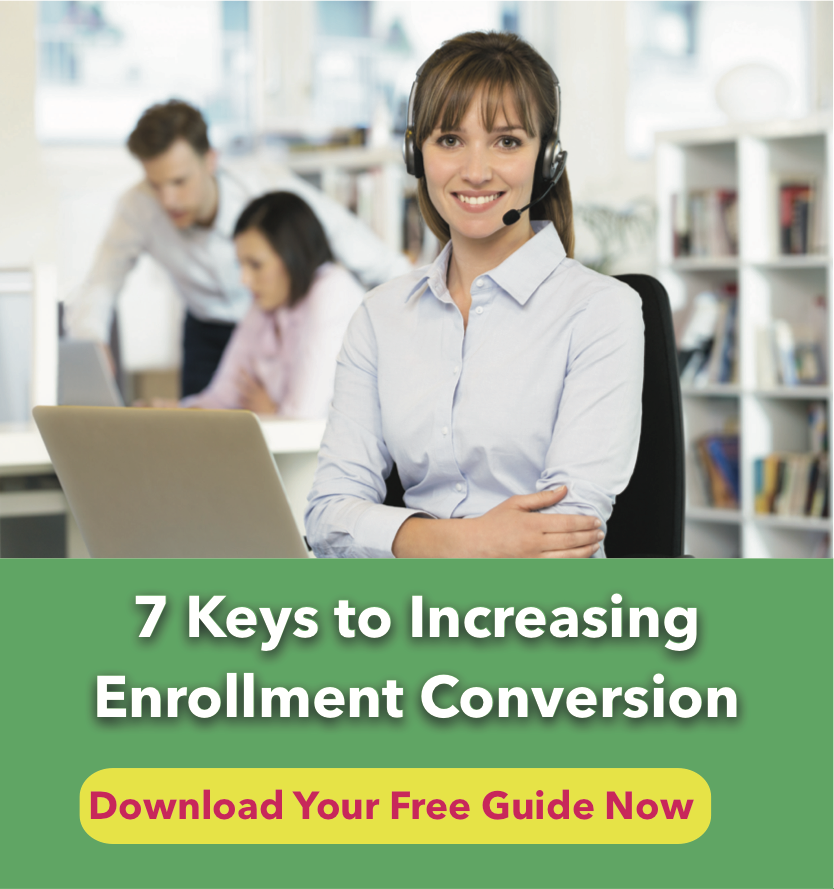Step up your enrollment efforts by visiting our blog over the next 7 weeks as we share 7 Keys to Increasing Enrollment Conversion. In addition to learning 7 Keys to Increasing Enrollment Conversion now you’ll discover:
• How to increase and capture more high quality inquiries without spending more money on marketing
• How to beat your competition with quality response
• When and how you should contact your leads
• How to significantly increase contact rates
• Increase contact and conversion rates with effective call sequencing
• Build out an ideal call strategy based on millions of lead records analyzed
• Leverage the most important factor for contacting and converting more prospective students
Do you ever feel like you are doing everything right in your marketing campaign but you’re just not seeing the results you’d expected? Are you seeing inquiries but not applications? There is a revolution underway in specifically non-traditional and graduate enrollment. Approaches that have been working are no longer getting the same results. The internet, the aftermath of the recession and the aversion to student debt and increased fierce completion have created a new type of prospective student executing a new type of search. Here are 7 keys to increasing enrollment immediately:
Key 1 – Generate The Right Leads – All leads are not created equally. Drive more inbound calls not just clicks. Unfortunately university marketing departments are missing opportunities for generating the most valuable inquiry. Mobile has transformed everything. According to Google, inbound calls convert 30% – 35% higher than digital click-to-submit rates. Inbound calls generate more revenue. Are you mobile ready? More than half of all calls (54 percent) stem from engagement on a mobile device; mobile search marketing is the top driver, responsible for 45 percent of inbound calls.
As call volume increases, so do the opportunities for marketers and ultimately, admissions reps. Calls are high intent interactions, so it’s important that marketers understand who is calling, and how and when they are dialing, to make the most of those conversations. The average call duration is 16 times longer than a website interaction, at 4 minutes, 7 seconds (compared to 15 seconds, as reported by data analytics company Chartbeat in 2014).75 percent of all calls to business originate on a mobile phone. As marketers increase mobile usability of digital content and websites, this will continue to increase. Need help with an inbound strategy? We are experts in demand generation and inbound marketing.
Lastly, successful EDU marketers know that the university web site is the primary recruitment tool so they are optimizing their sites site to convert on-page traffic with response devices. These attention grabbing icons include the following:
• RFI
• Live Chat
• Prominent Unique Toll Free Numbers
• Click-to-Call (Mobile Devices)
Each device can be measured, sourced and monetized. This approach circumvents competition; increases inquiries and integrates digital channels. And…most important, it increases enrollment.






